- Home
- Dufour Sailboats
Dufour Yachts: Your Passport to the Open Sea
Blending Performance & Comfort for the Recreational Sailor
For over half a century, Dufour Yachts has carved out a distinct niche in the sailboat market, offering a captivating blend of exhilarating performance and inviting comfort.
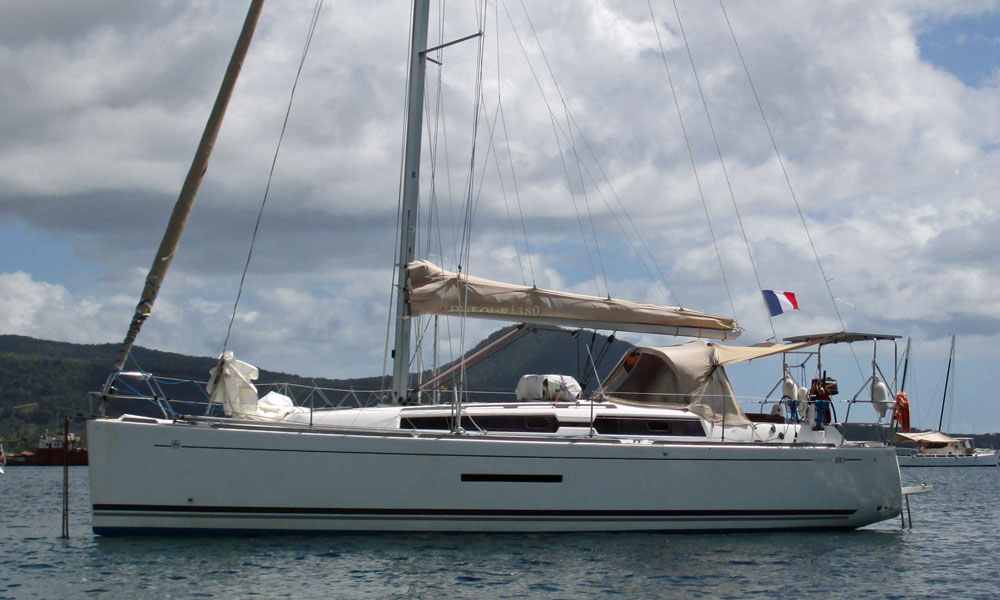 Dufour 380
Dufour 380From their early innovative designs to today's modern cruisers, Dufour has consistently appealed to recreational sailors and owners looking for boats that are as enjoyable to sail as they are to live aboard.
Dufour's Roots: From Engineer to Yacht Builder
The Dufour Yachts story begins in La Rochelle, France, back in 1964. Michel Dufour, a keen racing sailor and engineer at a locomotive factory, saw the massive potential of fiberglass—then a truly revolutionary material—for building boats. That vision led to his first yacht, the "Sylph," which sold over 400 models between '64 and '74, essentially kicking off Dufour Yachts. Hot on its heels came the 29-foot L'Arpege in 1967, quickly becoming a classic, with more than 1500 units built in just ten years. By the early 1970s, Dufour had become a leading exporter of French fiberglass sailboats, a real testament to their commitment to excellence and fresh ideas. Today, you'll still find Dufour Yachts operating from their La Rochelle base, remaining a significant player in the global yachting scene, now under the ownership of Fountaine Pajot since 2018.
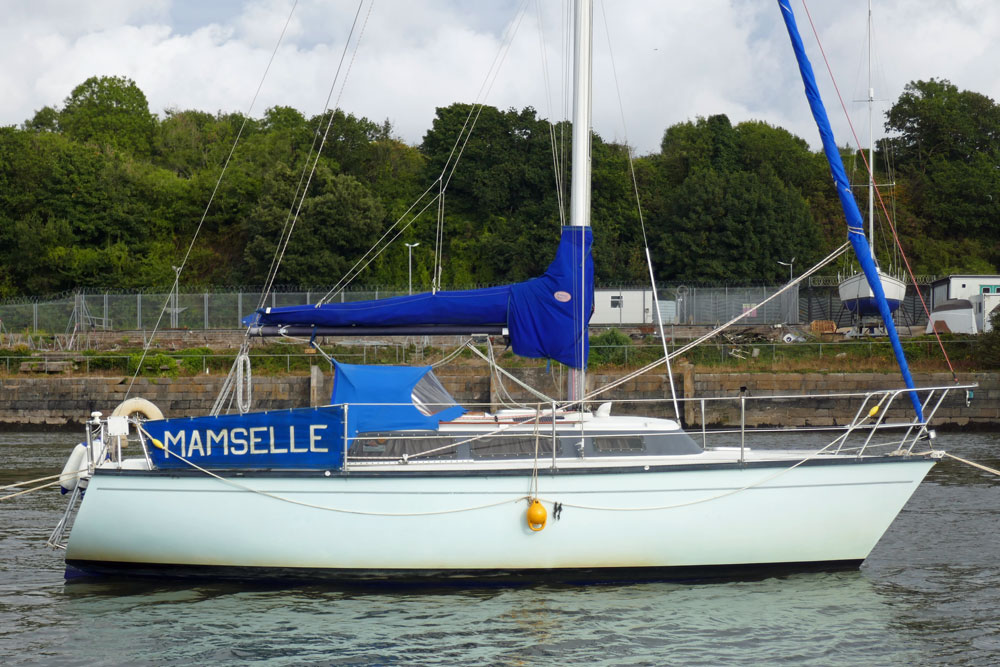 Dufour 2800
Dufour 2800Design Philosophy: Where Performance Meets Comfort
Dufour's design philosophy really boils down to creating yachts that are both elegant and performant—hitting that sweet spot between sailing prowess and sheer comfort aboard. They're big on collaborating with renowned external naval architects, especially Umberto Felci, who's been key to shaping their designs since 2005.
You'll often spot their signature design elements: well-balanced hull shapes, robust aft sections, and a focus on reducing wetted surface areas for efficient cruising. These boats are primarily built for coastal and offshore cruising, designed to deliver pure enjoyment for families and friends. Innovation has been a constant theme, evident in their adoption of composite construction and smart deck layouts. Newer designs, particularly in the Grand Large series, aim to maximize interior volume with features like broad sterns and full bow sections, which also help with stability when the boat's heeled over.
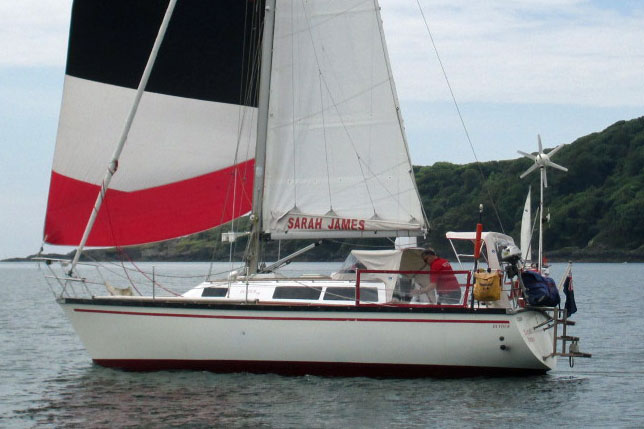 Dufour 29
Dufour 29Built to Last: Construction and Quality
Dufour yachts are primarily constructed using fiberglass reinforced plastic (GRP) for both hulls and decks. Early on, Michel Dufour’s fiberglass expertise was foundational, initially relying on hand lay-up techniques. Over time, they've adopted more advanced methods like vacuum-bagging for hulls and injection-molding for decks. This "sandwich construction," often featuring foam or end-grain balsa cores, strives for considerable strength while keeping weight down, all while ensuring good insulation and a smooth finish on both sides. The company's dedication to quality shines through in meticulous details, such as their use of NPG (neo-pentylglycol) resin gelcoat for better osmosis resistance, and the lamination of floors and bulkheads directly to the hull and deck for enhanced structural integrity.
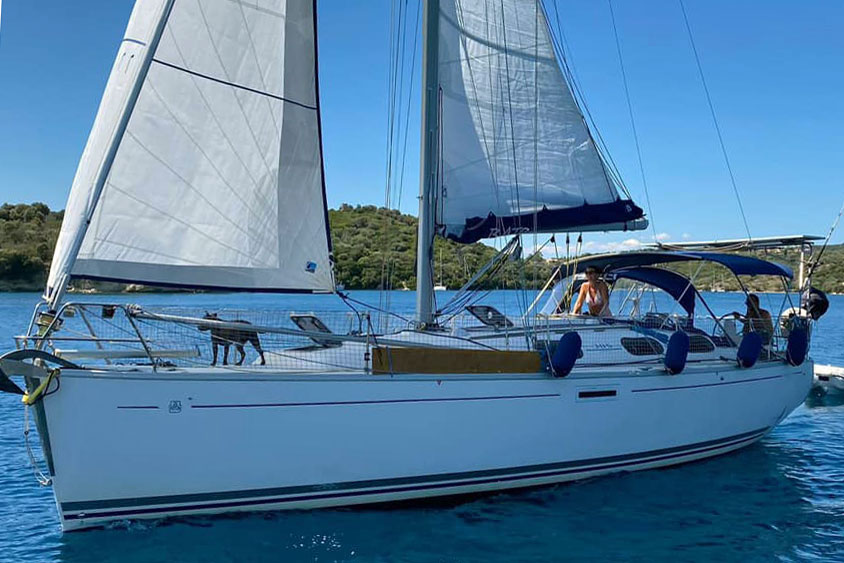 Dufour 385 Grand Large
Dufour 385 Grand LargeDiscover the Fleet: Iconic Models Through the Years
Dufour’s model lineup has changed quite a bit over the decades, reflecting new trends and tech while still holding onto their core values.
- Early Favorites: Beyond the "Sylph" and "L'Arpege," the Dufour 2800, launched in 1978, was a huge hit, with over 1300 units built in just six years. It boasted a surprisingly spacious interior for its size and came with various keel options, including a centerboard, deep keel, and shallow keel, making it incredibly versatile for different cruising grounds. The Dufour 29 also left its mark, known for its headroom and choice of keels, appealing to sailors seeking a nimble cruiser.
- The Classic & Grand Large Eras: The Dufour Classic 45, introduced in 1988, marked Dufour's big comeback to the U.S. market. Designed with generous hulls, it offered ample accommodation for charter use or family cruising, proving to be a good performer even with a shallower keel option.
The early 2000s saw the launch of the popular Grand Large range, which truly emphasized comfort and spacious living. The Dufour 385 Grand Large, a design by Umberto Felci, perfectly captured this shift with its generous beam and high displacement-to-length ratio, providing a comfortable layout with multiple cabin choices. The Dufour 455 Grand Large took this a step further, offering exceptional space with up to four double cabins, making it perfect for families and larger groups. Later, the Dufour 460 Grand Large incorporated popular features from larger Dufour designs, including an innovative outdoor galley and a versatile cockpit setup.
- Performance Cruisers: Dufour didn’t shy away from performance-oriented cruisers either. The Dufour 40, named "Yacht of the Year" in France in 2003, perfectly embodied the performance cruiser idea, delivering an exciting and fast sailing experience alongside functional and comfortable interiors. Its well-designed cockpit made for easy handling, even when sailing solo or short-handed. The Dufour 40e Performance refined this even further, appealing to those who wanted both racing capabilities and cruising comfort, with features like twin steering stations and a cleverly designed deck layout.
- Modern Cruising Yachts: Models like the Dufour 380 Grand Large continued the trend of spacious cruisers, available in both standard and performance versions with different mast heights and sail areas. The Dufour 412 and Dufour 520 showcase the ongoing evolution; the 412 is a refined version of the earlier 410, featuring broad aft sections and a fixed bowsprit, while the 520 provides a larger, more contemporary cruising platform.
Today, Dufour keeps producing a range of sailing yachts and catamarans, with current sailing yacht models including the Dufour 37, 41, 44, 470, 48, and 530.
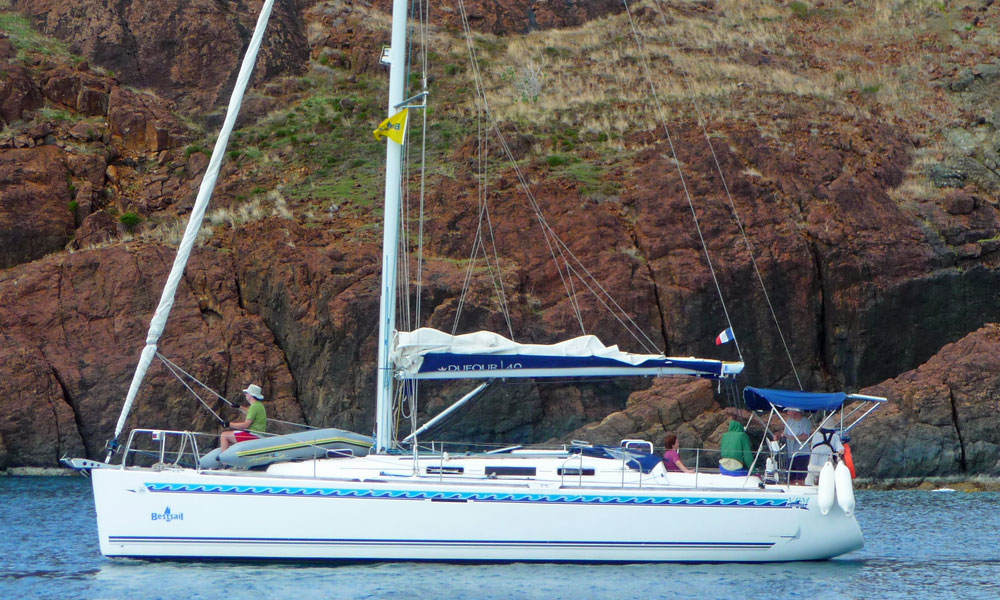 Dufour 40
Dufour 40On the Water: Sailing Performance & Stability
Dufour yachts are generally considered stable and easy to handle. While their Grand Large series prioritizes comfort and interior volume, they still manage to deliver decent sailing performance. The collaboration with designers like Umberto Felci ensures well-balanced hull shapes that contribute to good upwind performance and responsiveness. The move towards broader sterns and full bows, especially in newer models, aims to boost stability and interior space. Some models, like the Dufour 40, are praised for their easy maneuverability in crowded marinas, thanks to their semi-elliptical rudders and relatively flat hulls. While not strictly racing yachts, many Dufour models, particularly those with "e" or "Performance" in their name, can hold their own in club racing while still being comfortable cruisers.
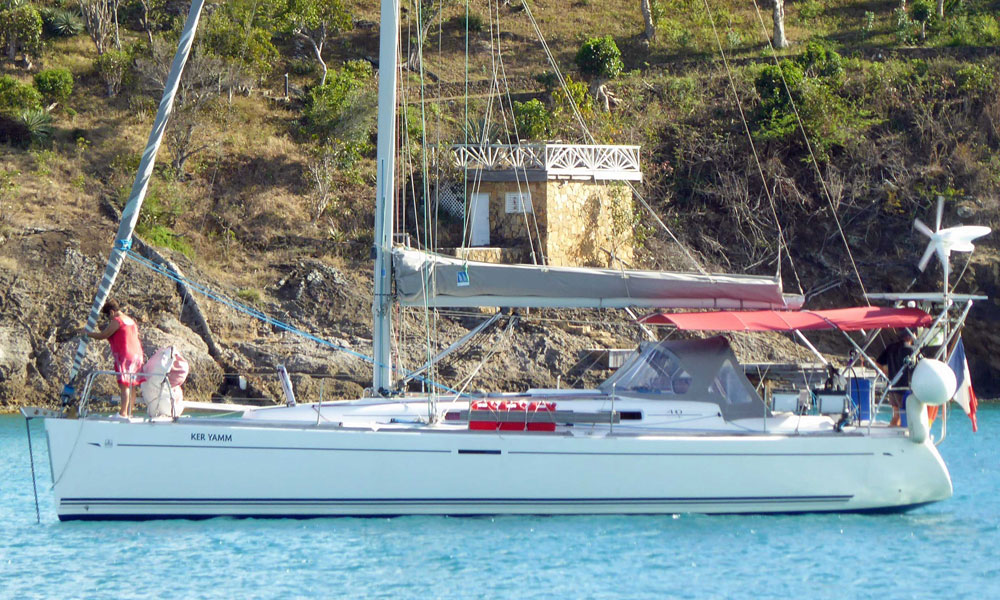 Dufour 40e
Dufour 40eStep Inside: Interior Comfort & Layouts
A defining feature of Dufour yachts is their focus on comfortable and practical interiors, with a strong emphasis on maximizing usable living space. The typical interior aesthetic often feels warm, with good use of wood joinery, from Moabi veneer in older models to lighter oak finishes in newer ones.
Their layout philosophy often involves open-plan salons with plenty of seating and smart features like convertible tables and integrated handrails. Galley designs are usually L-shaped or linear, well-equipped with amenities and ample counter space. Cabins are designed for comfort, offering good natural light and ventilation, and often feature generous storage. For example, the Dufour 41 offers a four-cabin layout option, showing off the impressive volume achieved in their modern designs. Newer models, like the Dufour 460 Grand Large and 54, have pushed the boundaries of onboard luxury with features such as integrated outdoor grills and spacious cockpits perfect for entertaining.
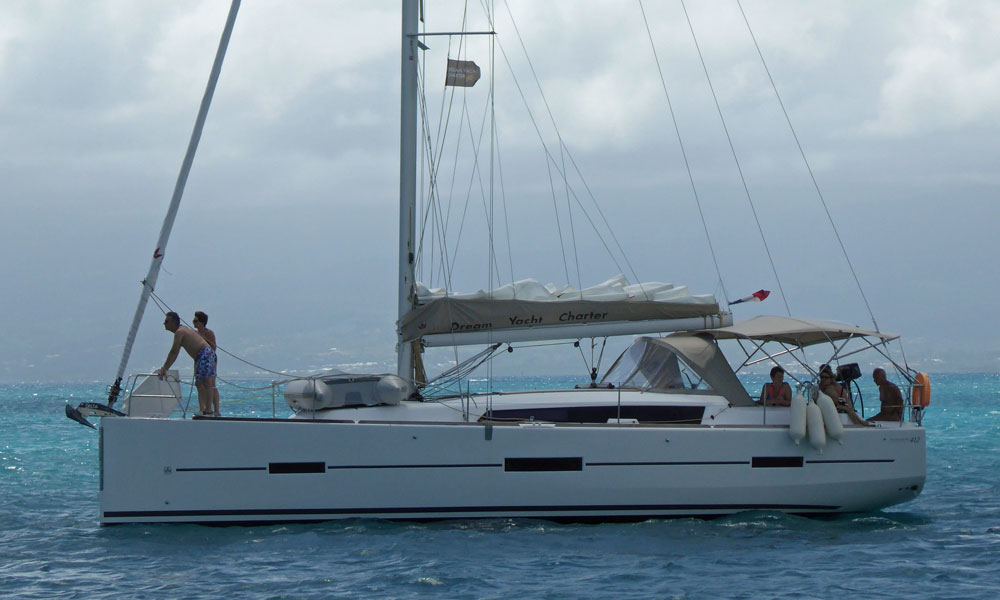 Dufour 412
Dufour 412Dufour's Place: Reputation & Resale Value
Dufour has built a solid reputation in the sailing community for producing well-built, comfortable cruising yachts that also offer satisfying performance. Their typical customer ranges from families looking for a spacious and easy-to-handle boat for extended cruises to individuals seeking a versatile yacht for both coastal adventures and occasional club racing. Dufour boats tend to hold their value well on the used market, which speaks volumes about their build quality and lasting appeal. While specific owner associations vary by region, there's a vibrant global community of Dufour enthusiasts. The brand's lasting legacy lies in its continuous evolution, adapting to new technologies and design trends while staying true to its core mission of providing enjoyable and comfortable sailing experiences for a broad spectrum of recreational sailors.
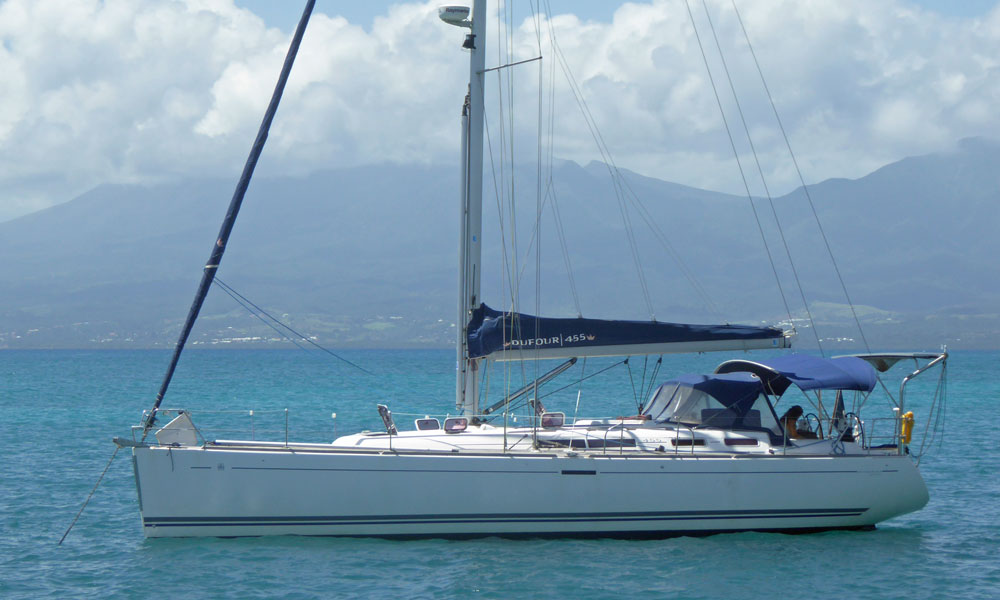 Dufour 455
Dufour 455Considerations: What to Keep in Mind
While Dufour yachts are highly regarded, like any boat builder, they've faced a few common considerations or criticisms over the years. Some older models, particularly those designed more for volume, might have a lower sail area-to-displacement ratio, meaning they could need a bit more breeze to perform at their best. Plus, while modern designs offer immense volume, a trade-off can sometimes be a higher freeboard, potentially making boarding from a low dock a bit trickier. However, Dufour has consistently worked to address these points with ongoing design refinements, such as adding twin rudders on some models to improve handling with their broader sterns.
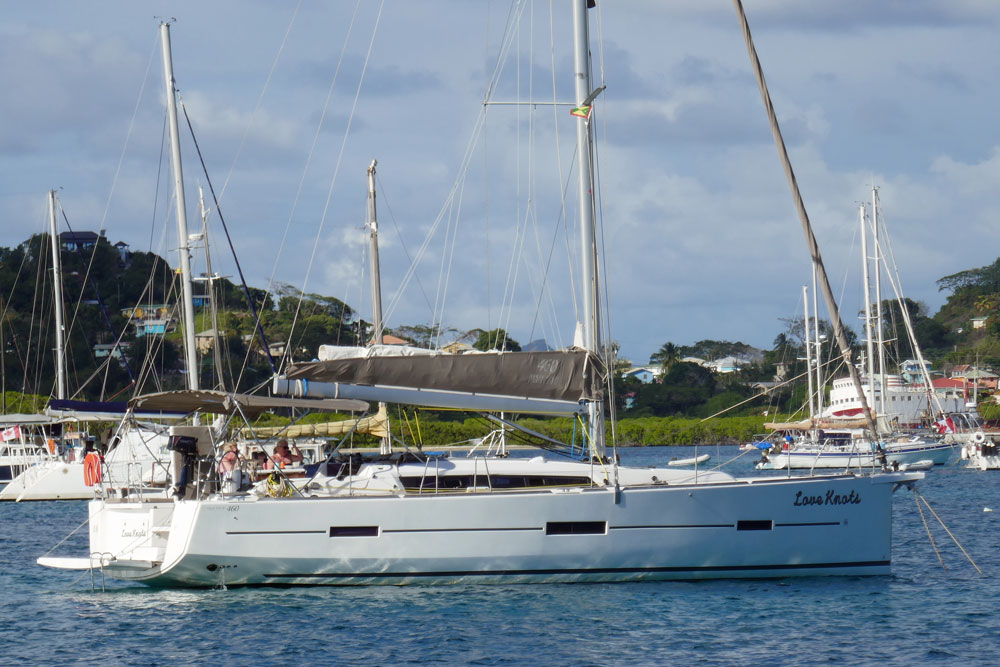 Dufour 460 Grand Large
Dufour 460 Grand LargeBeyond the Horizon: The Legacy Continues
While countless personal voyages on Dufour yachts undoubtedly exist within the owner community, the most notable ongoing story for Dufour is arguably its sustained partnership with naval architect Umberto Felci. This long-standing collaboration has been a driving force behind the brand's modern aesthetic and performance characteristics, consistently expanding what a production cruising yacht can offer.
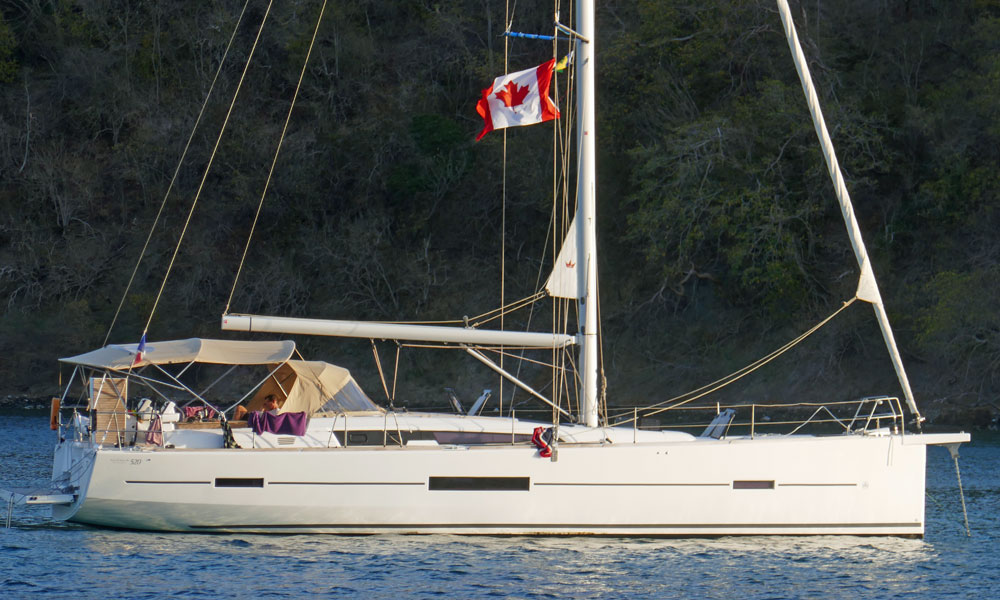 Dufour 520
Dufour 520Ready for Your Dufour Adventure?
Whether you're drawn to the classic lines of a Dufour 2800 or the modern comforts of a Grand Large, Dufour Yachts presents a compelling choice for recreational sailors. Their consistent dedication to blending sailing performance with liveability, coupled with a history of innovation and a commitment to quality, makes them a brand well worth considering. From Michel Dufour's early engineering smarts and passion for sailing, Dufour has blossomed into a global leader, building yachts that invite you to explore the world's oceans in comfort and style.
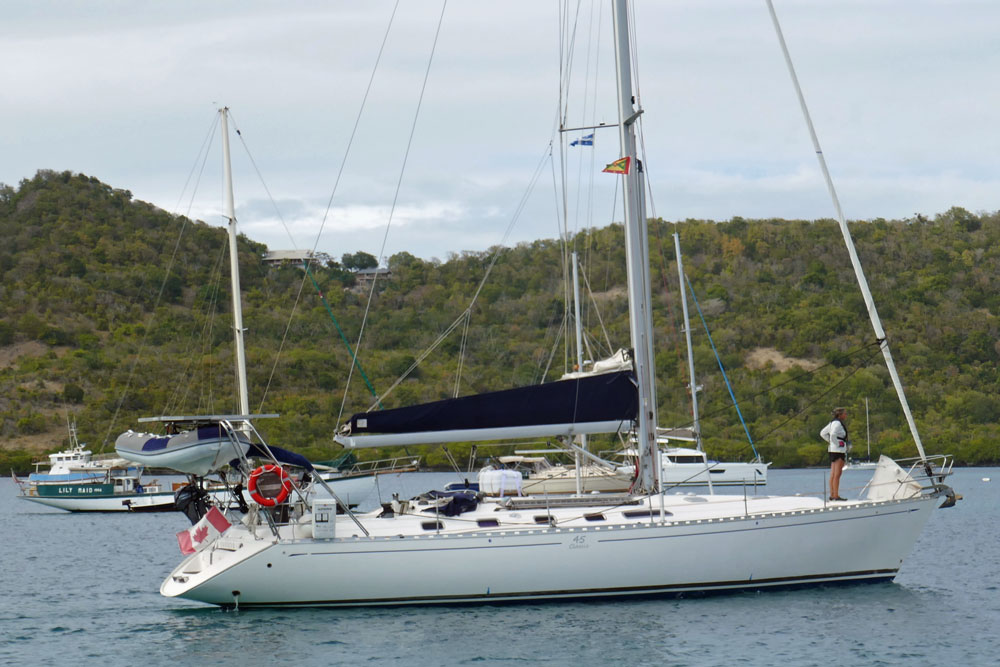 Dufour Classic 45
Dufour Classic 45Resources & References
- Universal Yachting. Dufour Yachts/Boats - Sailing Yacht Excellence over 50 Years
- yachtdatabase.com. Review of Dufour 2800
- yachtdatabase.com. Review of Dufour 29
- Yacht and Boat Sales. Dufour 385 Grand Large Review
- OceanWaveSail.Com. Bluewater Sailboat - Dufour 40 Performance
- Canadian Boating. Dufour 40E Performance Cruiser
- Sailing Today. Dufour 412 and 460 - tested and reviewed
- Blue Water Sailing. Dufour Grand Large 460
- Sailing Breezes. Boat Review - Dufour Classic 45
- Yachting Monthly. Dufour 41 review: unashamedly aimed at coastal cruising
- YouTube. All you have to KNOW about the New DUFOUR 54
Recent Articles
-
Modern Boat Electronics and the Latest Marine Instruments
Dec 20, 25 05:27 PM
Should sailboat instruments be linked to the latest boat electronics as a fully integrated system, or is it best to leave them as independent units? -
Hans Christian 43: Classic Bluewater Cruiser & Liveaboard Sailboat
Dec 10, 25 04:37 AM
Explore the Hans Christian 43: a legendary heavy-displacement, long-keel sailboat. Read our in-depth review of its specs, design ratios, and suitability for offshore cruising and living aboard. -
Planning Your Sailboat Liveaboard Lifestyle: An Ocean Sailor's Guide
Dec 06, 25 05:18 AM
Seasoned sailors share their methodical risk analysis for planning a secure Sailboat Liveaboard Lifestyle, covering financial, property, and relationship risks.












